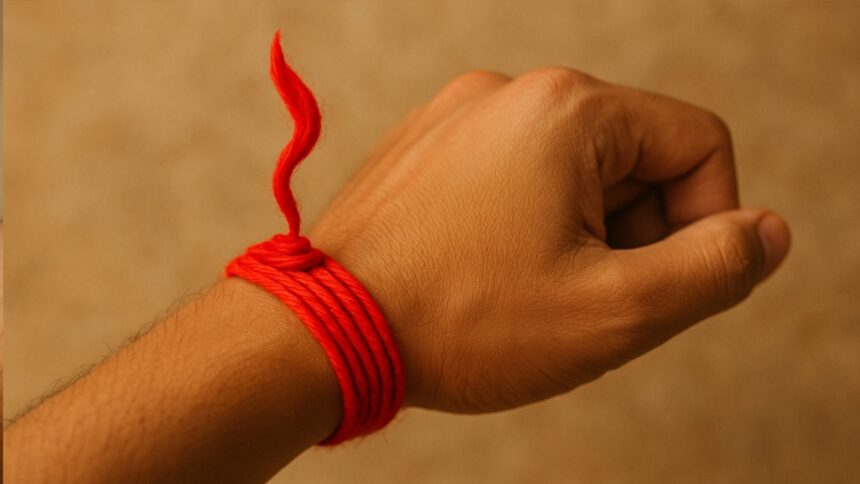The practice of tying a red thread, known as Kalava or Mauli, on the wrist in Hinduism has been going on for centuries. It is not only a religious tradition, but there is also deep spiritual, cultural and scientific significance hidden behind it. This thread tied on the wrist on puja, havan, marriage and other auspicious occasions is considered a symbol of faith and protection. Let us know why and how this small thread is so special in Hindu culture.
Kalava is a symbol of protection
According to Hindu beliefs, the red thread protects against evil eyes, negative energy and inauspicious powers. It is seen as a protective thread, which protects the wearer from calamities and mishaps. During religious rituals, mantras are chanted by the Pandit while tying it, which makes it even more sacred and effective.
Religious and Spiritual Significance
Tying Kalava is not just a ritual, but a symbol of devotion and dedication. It expresses reverence towards the Ishta Devta or Kuldevta. Tying it increases the spiritual power and positivity of a person. Kalava is also tied for fasts like Rakshabandhan, Sankashti Chaturthi or for any special resolution, which inspires to remember the resolution and fulfill it.
Astrological and Scientific View
In astrology, the red thread is considered to be related to Mars. Mars symbolizes courage, strength and energy, and tying Kalava reduces the effect of Mangal Dosh. From a scientific point of view, tying a thread on the wrist improves blood circulation, which has a positive effect on health. This small thread is also considered helpful in providing mental peace and stability.
Part of Cultural Tradition
This red and yellow colored thread is a symbol of auspiciousness, celebration and happiness in Hindu culture. Men tie it on the right wrist and women on the left wrist. While tying it, the Pandit often recites mantras, such as – “Om Yen Baddho Bali Raja, Danavendra Mahabal:. Ten Twamanubadhnaami, Rakshe Ma Chal Ma Chal.”. This mantra gives power to the thread as a protective shield.
How is Kalava made and tied?
Kalava is usually prepared from cotton thread, in which red and yellow colors are prominent. Before tying it, it is sanctified by placing it at the place of worship. Many times small amulets or beads are also added to it, which further increase its importance. This thread is usually tied at an auspicious time or on a special occasion.
Kalava in modern context
Kalava remains relevant even in today’s era. It is not only a part of religious rituals, but people also adopt it as a fashion and cultural identity. The younger generation sees it as a way to connect with their cultural roots. It also promotes social harmony by becoming a symbol of unity and faith.
Final Conclusion
Tying a red thread is a simple yet deeply meaningful act in Hinduism. It not only provides physical and mental protection but also keeps the spiritual energy and cultural values alive. Whether it is a religious ritual or personal belief, Kalawa, even though a small thread, holds great significance in life.



